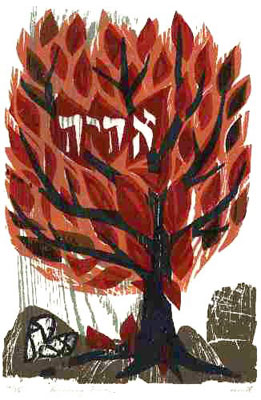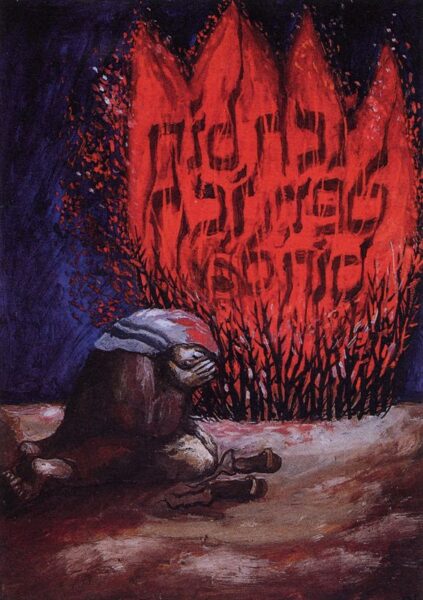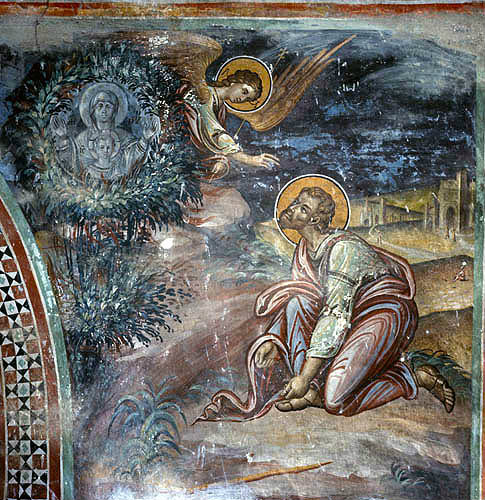 I wrote a blog post about the O Antiphons in 2019, and I loved picking out the image to illustrate each one. So I have decided to post on the O Antiphons again, in order to highlight additional images and to explore the scriptural roots of the meaningful word images. If you aren’t familiar with the O Antiphons or need a refresher, please check out my 2019 blog post here.
I wrote a blog post about the O Antiphons in 2019, and I loved picking out the image to illustrate each one. So I have decided to post on the O Antiphons again, in order to highlight additional images and to explore the scriptural roots of the meaningful word images. If you aren’t familiar with the O Antiphons or need a refresher, please check out my 2019 blog post here.
So today is the second O Antiphon out of the seven days before Christmas, in these late days of Advent intensification. Are you finding ways to get into the rhythm of praying the O Antiphons yet?
Remember, even if you are completely out of balance and rushing around getting ready for Christmas, reciting the words of the O Antiphon for each day takes less than a minute. You can easily include them before and after grace at dinner or as part of your advent wreath tradition. And if you take just another less than a minute to light a candle or your advent wreath beforehand, I promise the O Antiphons are breathtaking by candlelight!
You can find my blog post on the O Sapientia antiphon from yesterday here and the blog post on the O Radix Jesse antiphon for tomorrow, here.
O Adonai – Antiphon for December 18
O Adonai and leader of the House of Israel, who appeared to Moses in the fire of the burning bush and gave him the law on Sinai: come and redeem us with your outstretched arm.
O Adonai, et Dux domus Israel, qui Moysi in igne flammae rubi apparuisti, et ei in sina legem dedisti: veni ad redimendum nos in brachio extento.
O Adonai, Leader of the House of Israel:
Today is the second evening of the O Antiphons. In the Old Testament, “Adonai” is generally translated into English as “Lord.” It refers to the personal name of God, revealed to Moses at the burning bush. It consists of four letters in Hebrew (YHWH,) commonly written as “Yahweh,” a name considered too holy to be spoken. In the context of this O Antiphon, Adonai, Leader of the House of Israel, is the Messianic title that implicitly connects Jesus to His Jewish lineage. The reference to “House of Israel” implies a home, a personal space for Jesus and His extended family. The following verse, from the gospel of John, shows that Jesus claims His heritage as Adonai from YHWH I AM:
Jesus answered [the Pharisees in the temple], “I solemnly declare it: before Abraham came to be, I AM.” (John 8:58)
Who appeared to Moses in the fire of the burning bush and gave him the law on Sinai:
Moses was tending the flock of his father-in-law Jethro, the priest of Midian. Leading the flock across the desert, he came to Horeb, the mountain of God. There an angel of the Lord appeared to him in fire flaming out of a bush. As he looked on, he was surprised to see that the bush, though on fire, was not consumed. So Moses decided, “I must go over to look at this remarkable sight, and see why the bush is not burned.” When the Lord saw him coming over to look at it more closely, God called out to him from the bush, “Moses, Moses!” He answered, “Here I am.” God said, “Come no nearer! Remove the sandals from your feet, for the place where you stand is holy ground.” (Exodus 3:1-5)
This O Adonai antiphon is perhaps the most Jewish of all seven O Antiphons. This is demonstrated by the fact that it has roots in a number of passages in Exodus, the most important and iconic story that is so essential to Jewish identity. Adonai appears to Moses in the burning bush as I AM, the same I AM who later delivered the ten commandments to Moses at the mountaintop, in Exodus 20.
Jesus is specifically associated with Adonai in the burning bush, through his mother Mary. In Eastern Orthodox tradition, the burning bush “prefigures the Virgin Mary, on whom the divine light descended.” There are many orthodox icons, like the one to the left, that show the Theotokos (Mother of God) within the flames of the burning bush. Also, according to Ives Digory, “the union of the living flame with the living bush was thought to signify the union of divinity and humanity in Christ.”
Come and redeem us with your outstretched arm.
Therefore I say to the Isaraelites: I AM the Lord. I will free you from the forced labor of the Egyptians and will deliver you from their slavery. I will rescue you by my outstretched arm and with mighty acts of judgement. I will take you as my own people, and you shall have me as your God. (Exodus 6:6-7)
There seems to be something important about arms, and especially outstretched arms, that mattered to the Israelites in the Old Testament. In the Exodus verses above, we learn that Yahweh, the Divine Patron, intends to deliver the Israelites from Egypt with an outstretched arm. Then, Yahweh followed through and made this come to pass by having Moses extend his arm and staff so that the Red Sea could be opened for their escape:
 “Then the Lord said to Moses, “Why are you crying out to me? Tell the Israelites to go forward. And you, lift up your staff and, with hand outstretched over the sea, split the sea in two, that the Israelites may pass through it on dry ground.” (Exodus 14:15-16)
“Then the Lord said to Moses, “Why are you crying out to me? Tell the Israelites to go forward. And you, lift up your staff and, with hand outstretched over the sea, split the sea in two, that the Israelites may pass through it on dry ground.” (Exodus 14:15-16)
There is also a story about outstretched arms in Exodus 17:8-13, related to a war brought by Amalek against Israel. Whenever Moses kept his arm and staff outstretched, Israel would have the advantage in the battle, but when he rested, Amalek had the upper hand. In the end, Aaron and Hur supported an exhausted Moses on either side, holding his hands steady until the Israelites prevailed. In the Exodus stories, an outstretched arm reads as a statement of power over enemies. Isaiah also refers to strong arms as the sign by which God provides power and strength to the people:
Awake, awake, put on strength, O arm of the Lord! Awake as in the days of old, in ages long ago! (Isaiah 51:9)
Here comes with power the Lord God, who rules with a strong arm. (Isaiah 40:10)
In contrast to the way outstretched arms were used in the Exodus stories, Jesus fulfilled Isaiah’s prophesies and redeemed us all with his outstretched arms on the cross. Through his death, Jesus inverted the power over enemies into power through loving surrender. However, the crucifixion is still such an excruciating, violent image. So it just makes me have to ask, from a female perspective on power, why can’t we focus on the use of outstretched arms for reaching out to hug and hold and care for others, instead of being violent? For I am sure that Mary, both the gentlest and strongest of mothers, used her outstretched arms to enfold and hold and cuddle baby Jesus after he was born. Countless parents before Mary, and in the many years since, have done the same, demonstrating not a power over enemies, but rather a power that originates with love and tenderness and care for others. Love is everything!
As a reminder, there are a couple of options if you are interested in hearing the O Antiphons chanted in Latin. First, if you click here you will go to the Traditional Catholic Living website (Reference 7) that has a link to each O Antiphon, with the words and music so that you can follow and chant along. You can also find the chants here at an LDS blogpost (Reference 8.) I like this link, because it includes the entire vespers sequence. Each O Antiphon is chanted, followed by the Magnificat, finishing with the O Antiphon chanted again.
In my opinion, listening to the Gregorian chanting by candlelight is the best way to experience the O Antiphons!
 Readings: The New American Bible, Confraternity of Christian Doctrine, Washington DC, 1970.
Readings: The New American Bible, Confraternity of Christian Doctrine, Washington DC, 1970.
Reference 1: Malcolm Guite, “O Adonai, a Second Advent Reflection with Sonnet,” blog post, December 18, 2021.
Reference 2: O Adonai, Mount St. Mary’s Cistercian Abbey, Wrentham, MA, December 18, 2018.
Reference 3: O Adonai Second O Antiphon Reflection 2011, blog post by Blue Eyed Dennis, https://blueeyedennis-siempre.blogspot.com/2011/12/o-adonai-second-o-antiphon-reflection.html.
Reference 4: Ives Digory, O Adonai: Meditations on the O Antiphons, blog post at Sanctum in Heremis website, December 18, 2014.
Reference 5: Fr. Robin Gibbons, The O Antiphons – O Adonai, Independent Catholic News, https://www.indcatholicnews.com/news/41152, December 18, 2020.
Reference 6: Br. Jerome OSB, “Reflections on the O Antiphons,” blog post at https://liturgy.co.nz/reflection/oantr2.html, 2011.
Reference 7: Sing the O Antiphons Gregorian Chant, Traditional Catholic Living website, http://www.traditionalcatholicliving.com/o-antiphons-advent/.
Reference 8: Awaiting the Coming Messiah: The “O Antiphons,” LDS Seasonal Materials, http://huntsmanseasonal.blogspot.com/2013/12/awaiting-coming-messiah-o-anitiphons.html.
Image 1: The Burning Bush, print by Jeanne Kun, Living Bulwark, https://swordofthespirit.net/wp-content/bulwark/mar07p12.htm, 1997.
Image 2: Icon of Blessed Holy Virgin Mary as the Burning Bush, written by by Philip Davydov. 2014.
Image 3: Burning Bush, Sieger Koder (1925-2015), Sieger Koder Museum in Ellwangen, Germany.
Image 4: Moses and the Burning Bush, 15th century fresco at Monastery of St. John Lampadistis, Cyprus, Kalopanayiotis, Reference CY201-1-11, Sonia Halliday Photo Library.















Leave a Reply
Join the conversation by submitting a comment to this blog post below.